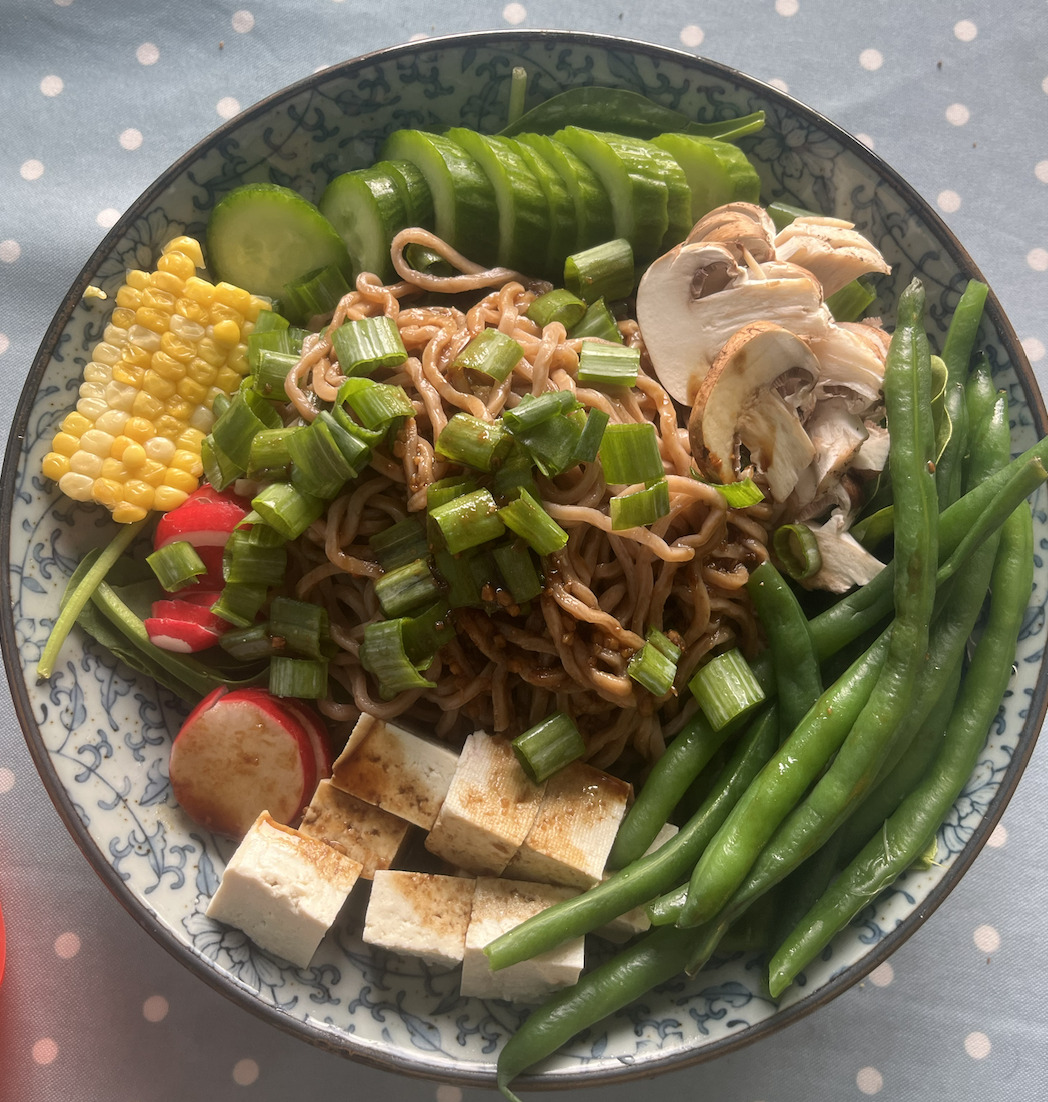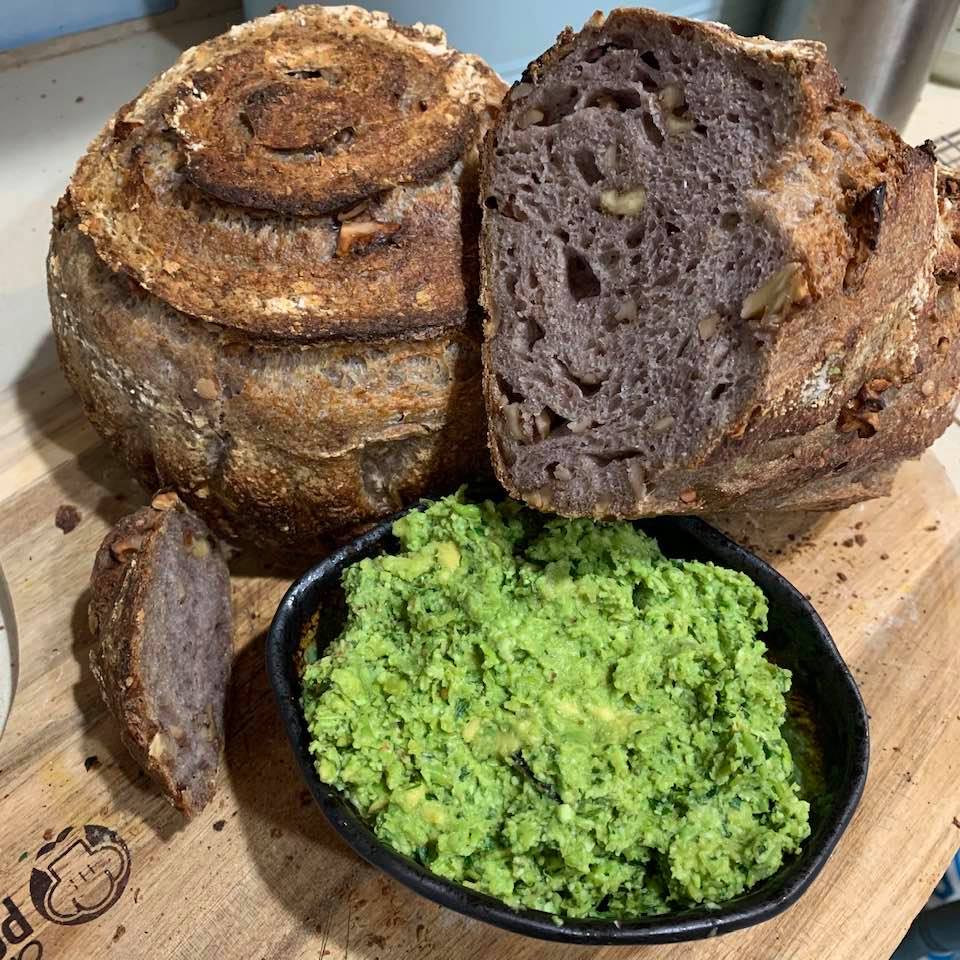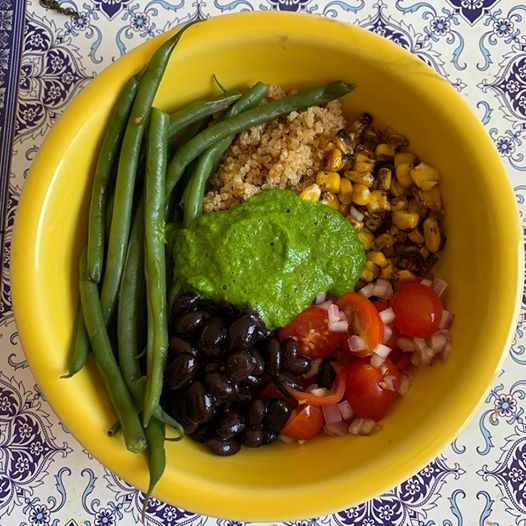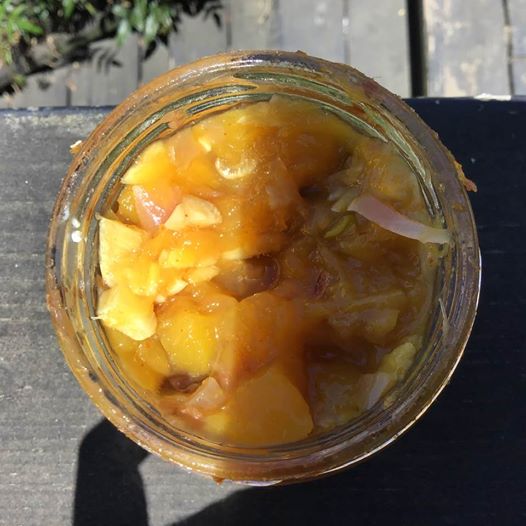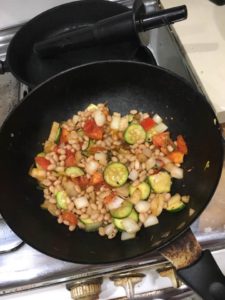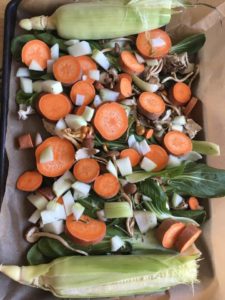This semester, my classes at the GTU are rather ecumenical – two on Judaism and the Old Testament and two on Buddhism. So, I am celebrating the Jewish New Year with a Buddhist-inspired New Year Japanese dish: a vegetable-rich zaru soba.
On my favorite show, Midnight Diner, a wise and mysterious restaurateur opens his little establishment at midnight and closes at 7am. A group of delightful locals, as well as one-timers, from the nightlife scene around Shinjuku show up and he makes them the most delicious meals. Watching the show requires a dialectic approach, as almost nothing is vegan, but the care and meaning behind each dish is evident. Here’s the opening sequence:
Every season has a last-episode special in which all the diner guests are treated to soba in hot broth to celebrate the New Year. Since I usually cook soba from dry, I love soba soups. But this week I managed to get my hands on fresh, locally made soba, and it turns out that high-quality noodles are like revenge: best served cold.
I sliced up a few vegetables, quickly blanched some green beans, put some nice fresh medium-consistency tofu in the mix, and made a hasty dipping sauce that turned out phenomenal. Perhaps it’s not the authentic soy-based dressing for zaru soba, but the more I read about the adaptations and permutations of Buddhism in the West the more I’m at peace with there being lots of variations of Buddhism–with big doses of Orientalism and Occidentalism thrown into the debate. For a really interesting take on all this that hits home, read the book I’m currently reviewing, Emily Sigalow’s American JewBu. This doesn’t mean we should stop talking about colonial influences or ask questions about what gets lost (or gained, or fabricated) in translation. But the changes to this now-global religion and many cultures that came to the US are highlighting the futility of having shrill authenticity fights when we could employ our time eating tasty noodles.
This recipe also pays homage to my favorite Japanese Buddhist restaurant, and possibly my favorite vegan restaurant in the city: Cha Ya. They have a really lovely cold soba salad there, as well as delicious soba soups with mountain vegetables, noodles, or kitsune (fried tofu.)
Anyway – less blather, more recipe. Happy Jewish New Year! ユダヤ人の新年明けましておめでとうございます
- 1 tbsp Nama Shoyu
- juice from 1 lime
- 1 heaping tbsp good quality miso
- 1 chopped garlic clove
- 1/2 tsp grated ginger
- 1 cup fresh, uncooked soba noodles
- 1-2 big handfuls baby spinach
- 2 Persian cucumbers
- 5 radishes
- 4 tbsp green onions
- 5 crimini mushrooms
- 1/2 cup green beans
- 80g medium-consistency tofu
- 1 tbsp cooked corn kernels
First, make the sauce. Mix the first five ingredients well in a small bowl and set aside.
Thinly slice cucumbers, mushrooms, and radishes; mince green onions; cut tofu into cubes. Layer spinach leaves on a nice, wide plate.
Boil water in a pot. Drop the green beans in for about 30-45 seconds, then get out with tongs (keep the water boiling) and drop in ice-cold water to chill and preserve crispness.
Then, drop the soba noodles in the boiling water. Cook for about 2 mins, then drain and cool under running water. Place on top of the spinach. Arrange the cucumber, green onions, tofu, green beans, mushrooms, and corn on or around the noodles. Drizzle sauce on top.

